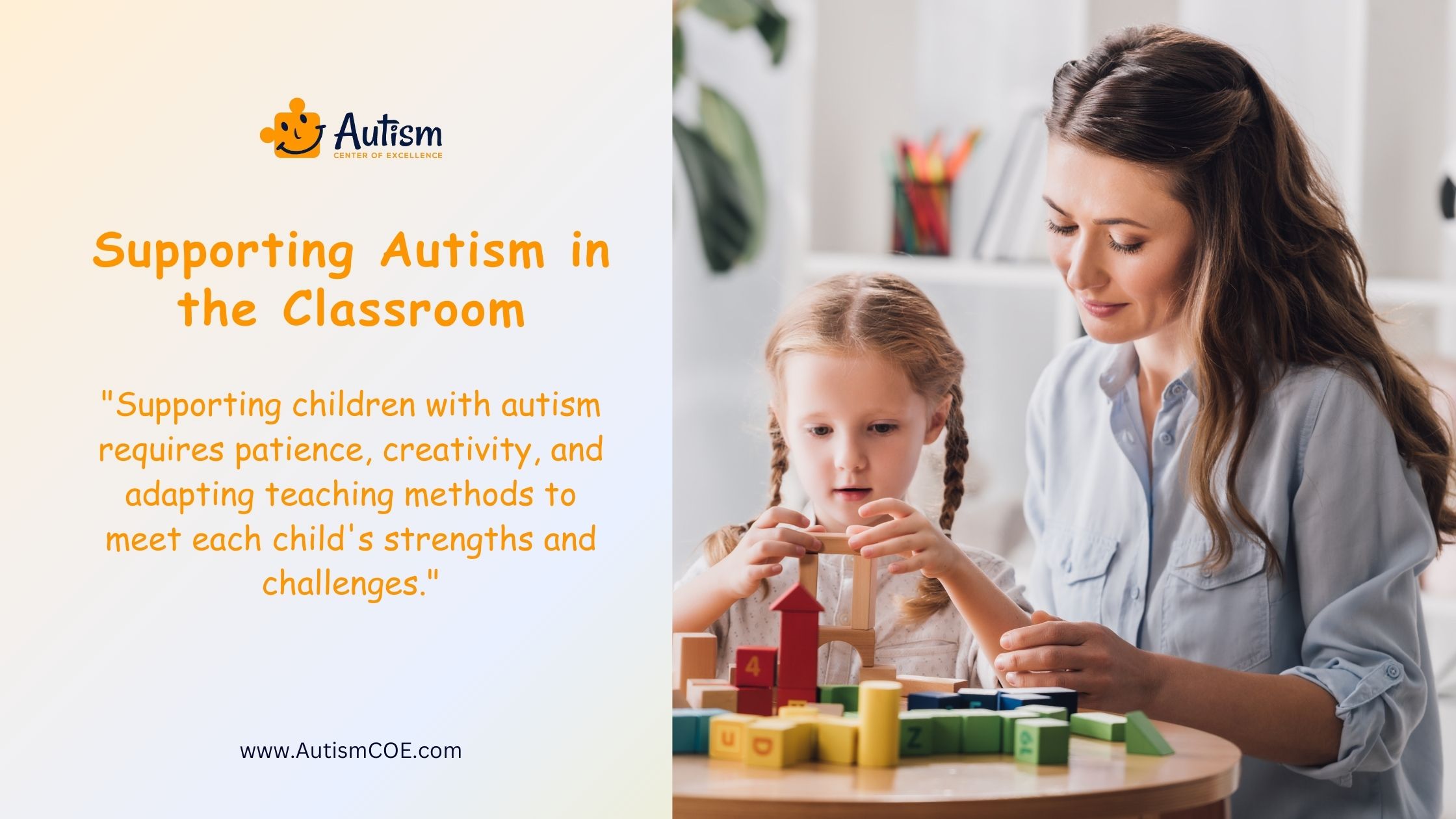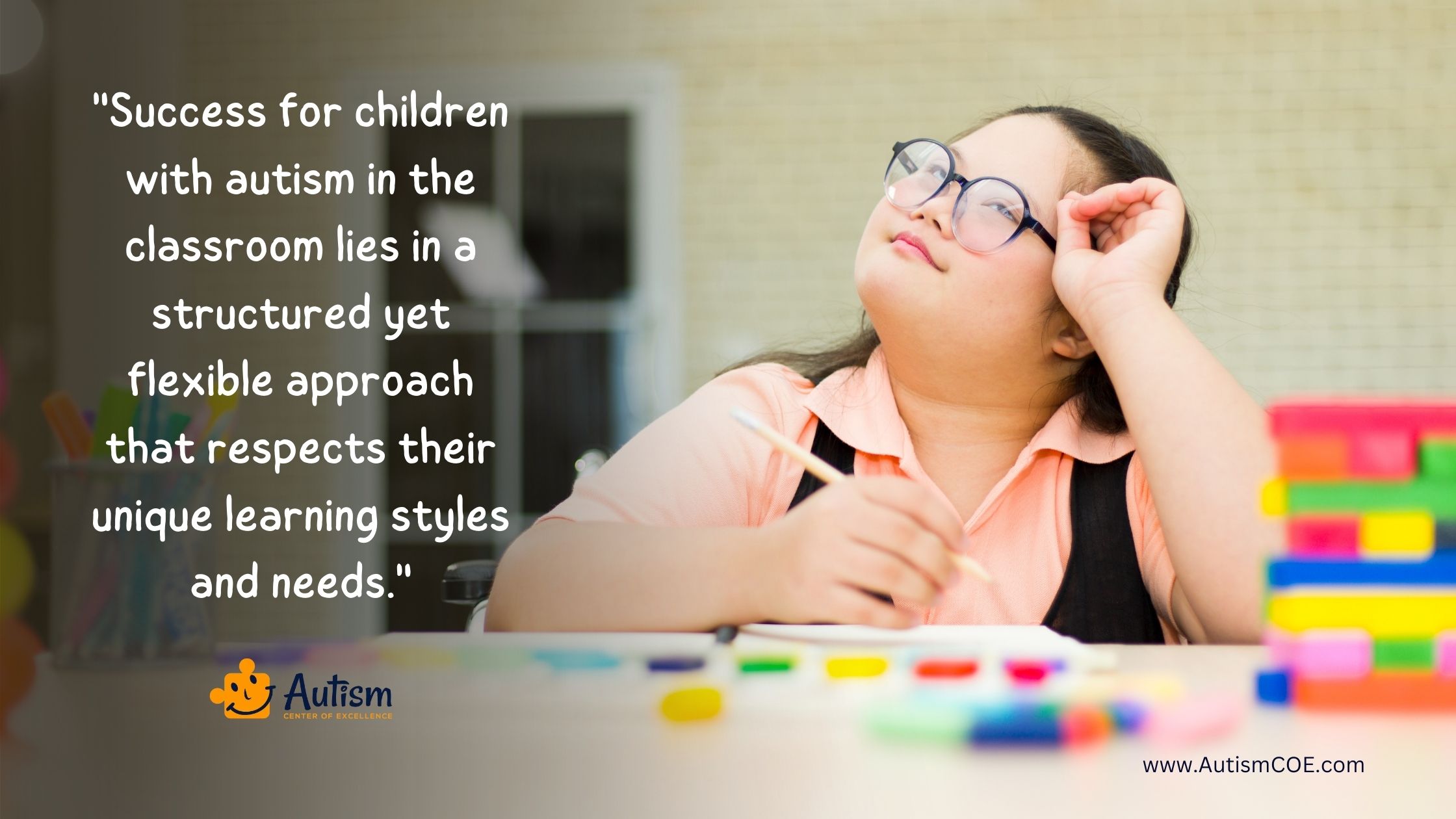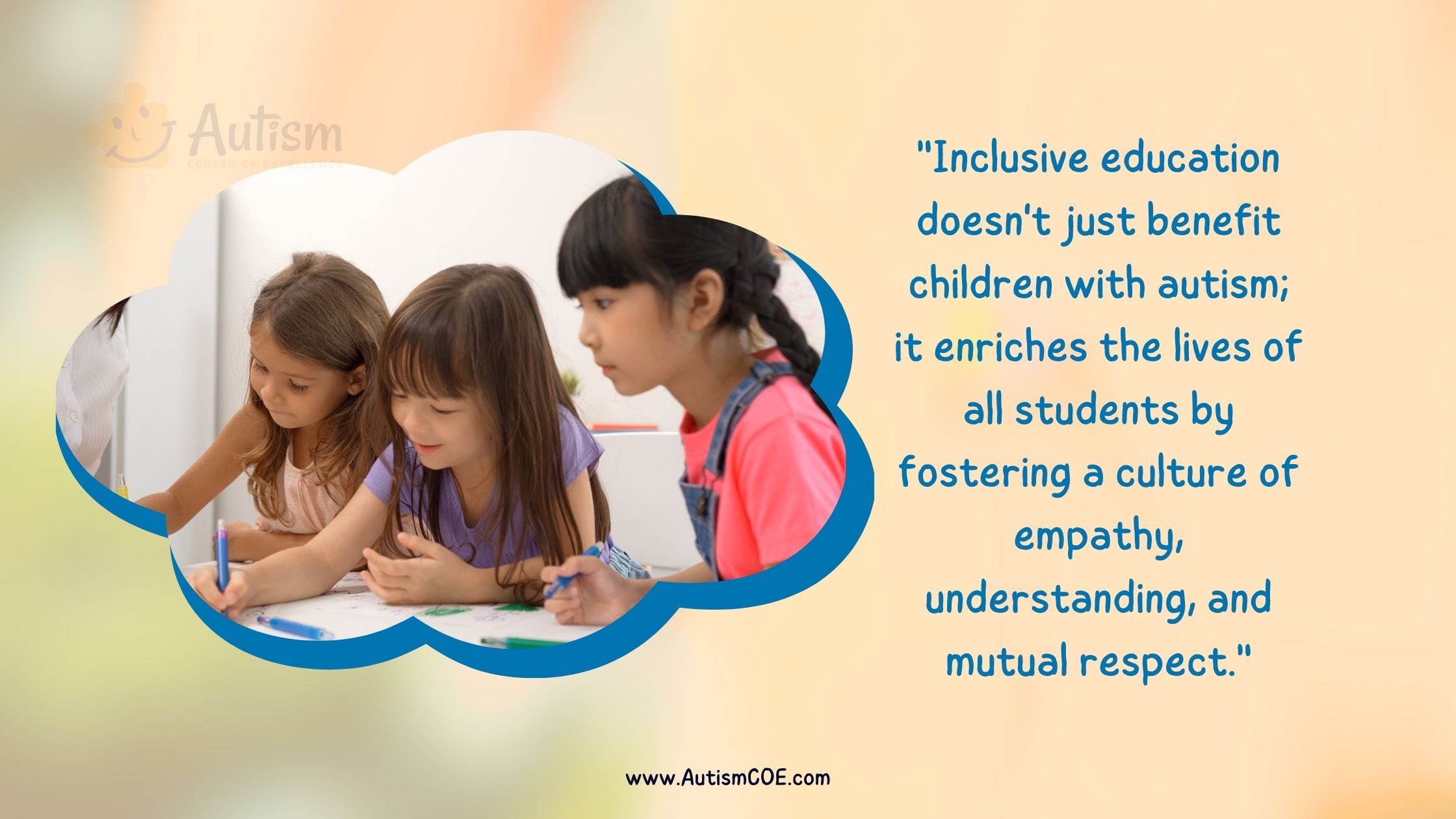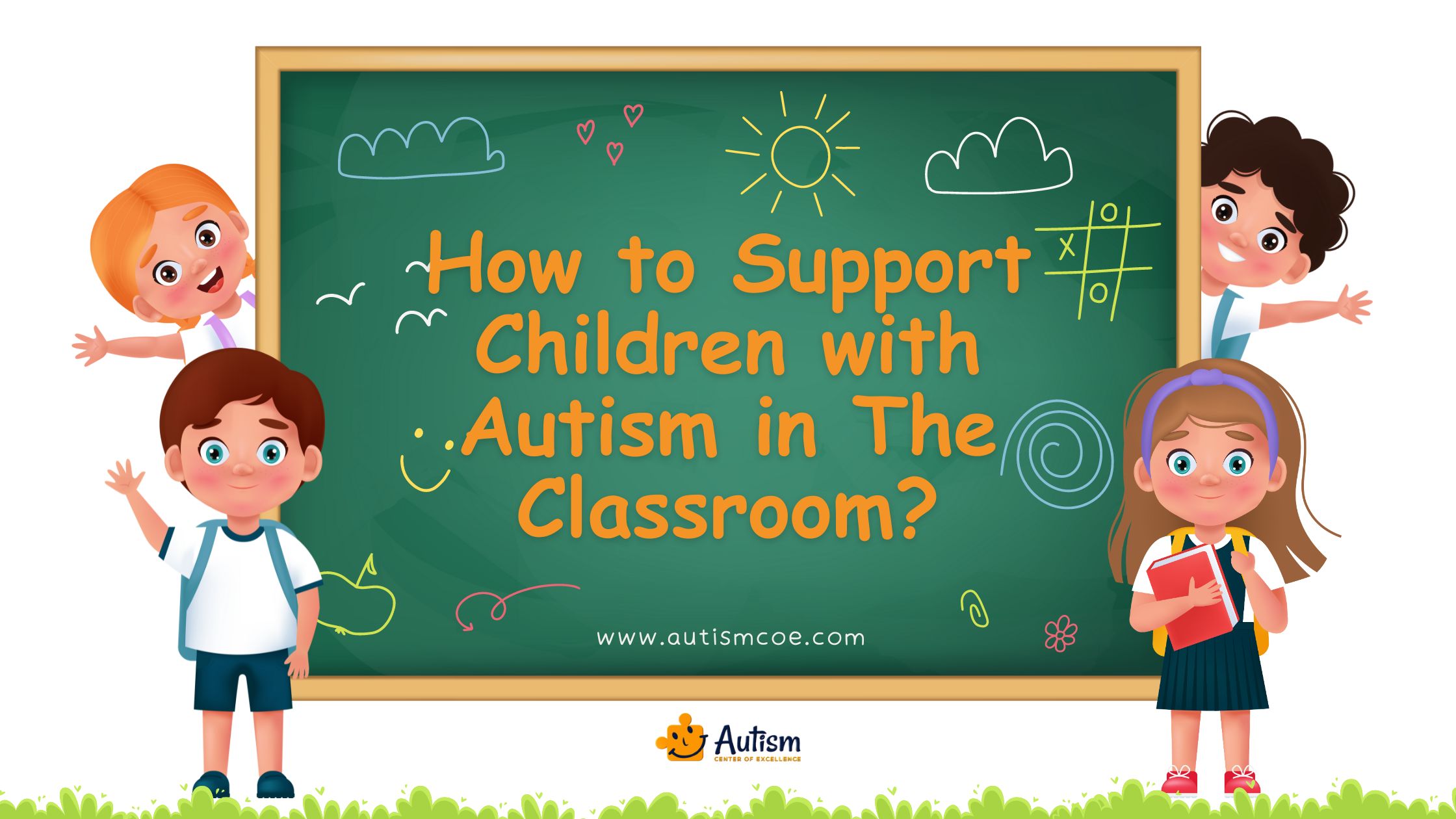Supporting children with autism in the classroom is of primary importance for their academic and social development, thus making it possible for them to reach School Readiness and succeed. The parents, educators, therapists, teachers, and school administrators must comprehend the special requirements of these students.
This guide is designed to provide you with real-life tips and techniques for creating a classroom that is an inclusive, autism-friendly environment where every child can learn at their own pace. To the useful teaching techniques and required classroom adjustments, this comprehensive guide will help you in dealing with special education issues and promoting a friendly learning environment for Children with Autism.
How Does Autism Affect Education?
Autism Spectrum Disorder (ASD) is a disorder that affects the development of an individual, and it is characterized by social and communication problems as well as repetitive behaviors. The Symptoms in Children vary from the mild ones to the severe, and thus they affect their learning and participation in traditional classroom settings. Children with autism might have a problem of understanding social cues, keeping attention and handling sensory information which are the basic skills in learning and interaction. These problems could be the reason why it is hard to follow instructions, participate in group activities, or switch from one task and environment to another.
In the sphere of education, these problems require a special kind of help and adjustments for children with autism to be able to succeed. The old teaching techniques are not always successful, thus making the teachers use special methods in order to satisfy the needs of these students.
Parents Must Know: The Common Challenges Faced by Children with Autism in a Classroom Setting
Parents should understand that children with autism are usually not well in the classroom and this adversely affects their level of preparedness and learning. These are the challenges that tend to be faced by children with Autism, for instance, they have difficulties in social interactions which make them not understand some things or even be isolated from other kids.
Besides, children with learning difficulties often cannot say what they need or understand instructions easily which is why visual aids and simple language are important for them. Sensory Sensitivities are yet another big problem, with the noisy or visually busy environments being too much for them and thus they cannot focus properly.
The difficulties with the changes and rigid routines can therefore lead to stress which is underscored by the need for a structured and predictable learning environment. Knowing about these issues helps parents to be advocates for their children’s classroom adjustments and teaching methods that are suitable for their children.
What do Children with Autism Need in School?
Autistic children require a supportive, structured and predictable learning environment to do well in school. The main needs are, IEPs that will be tailored to their specific strengths and weaknesses, Sensory-Friendly Accommodations which will help in minimizing the distractions, and clear communication strategies such as visual aids and non-demanding language.
Apart from that, children with autism profit also from regular routines and Positive Reinforcement as well as social interaction by means of peer support and specialized teaching strategies. Through the fulfillment of these needs, educators will enable children with autism to attain School Readiness and do well in academics.

Supporting Autism in the Classroom
Supporting students with autism in the classroom involves a lot of different strategies to make them feel special and at home. By means of special instruction techniques, personal adjustments, and a lot of love we can truly be useful. ABA Therapy, or Applied Behavior Analysis, is an effective method of promoting good behavior and increasing learning by means of well-organized positive reinforcements.
Small changes, for example, the use of Visual Supports, introducing clear routines, and creation of cozy sensory-friendly spaces can be made to manage overstimulation and make the classroom a place where everyone feels welcome. Thus, educators can establish a happy and supportive learning atmosphere where both the academic and social development of students with autism is considered.
“Supporting children with autism in the classroom requires patience, creativity, and a commitment to adapting teaching methods to meet each child’s specific strengths and challenges.”
Classroom Accommodations for Children with Autism
Classroom accommodations are the changes or adjustments that are made to the learning environment for students with disabilities. Such accommodations are designed to make students with special needs able to get and be involved in educational activities just as their peers do.
Sensory-Supportive Classroom Setup
A sensory-supportive classroom is a special type of room that reduces the level of stimulation and creates an atmosphere where children with autism can relax. This is achieved by using neutral colors, reducing the harsh lighting, and controlling noise levels to make students concentrate better and feel at ease.
Visual Aids and Schedules
Visual Supports for Autism like picture cards and illustrated schedules can greatly improve the understanding and communication of children with autism. These tools assist in the understanding of what is expected, how to behave, and follow instructions making it easier for students to know and observe classroom activities.
Low Sensory Areas and Quiet Zones
Creating low sensory zones or quiet corners in the classroom gives students a place to go when they feel over-stressed. The areas can be filled with calming materials like: soft cushions, weighted blankets, and noise-canceling headphones.
Task Breakdown and Clear Instructions
The division of tasks into smaller, doable steps and the giving of clear, simple instructions to kids with autism are what make them understand their assignments better and finish them. Through step-by-step visuals or checklists, the students can be better assisted in their learning process.
Effective Teaching Strategies
As educators, it is important to have effective teaching strategies when working with students with autism in the classroom.
Individualized Education Plans (IEPs)
IEPs are specifically designed for each autistic student to meet his or her unique needs, setting special goals, accommodations, and teaching strategies. These plans make sure that the educational methods are customized and efficient in assisting the student’s growth.
Communication Strategies
The use of non-demanding language and visual communication tools like picture exchange systems or social stories can enhance the interactions between teachers and students with autism. These strategies bridge communication gaps and help in understanding.
Behavioral Interventions and Positive Reinforcement
The behavioral interventions such as ABA Therapy Techniques could be applied and positive behavior would be formed while the difficult ones reduced. The positive reinforcement, for example, praise or rewards, makes the students do what is required of them and therefore motivates them to learn.
Peer Support and Social Interaction Facilitation
By fostering peer support and creating a structured social environment, children with autism are able to acquire the necessary social skills. The activities like buddy systems, group projects, and guided play are the things that enhance inclusion and friendship.

Creating an Autism-Friendly Classroom Environment
It is very important to have an environment that includes and supports the learning of students with autism. Here are the 4 methods you can use to create a classroom that is more autism friendly.
Structured and Predictable Routines
The regular daily schedules are the source of confidence and assurance for children with autism. The fact that the students have clear schedules and regular transitions enables them to go through their school day with ease.
Flexibility and Adaptability in Teaching Methods
Besides, structure is essential but being flexible and adaptable in teaching methods enables teachers to adjust the individual needs and learning styles of students with autism. This could be changed by modifying the lesson plans, giving different assignments, or using varied teaching materials.
Incorporating Interests and Strengths of Children with Autism
The individual interests and skills of children with autism can be used to increase their participation and enthusiasm. The combination of these likes in the lessons and activities makes learning more meaningful and fun.
Collaboration with Special Education Professionals
The close cooperation with special education professionals makes sure that teachers get all the help and materials they need to teach students with autism. Collaboration enhances the team spirit in solving problems and enjoying achievements.
Join Our Weekly Newsletters!
Subscribe now to stay updated with our latest email updates.

Importance of Inclusive Education for Children with Autism
Inclusive Education is crucial for autistic children as it facilitates their social, emotional, and academic growth in a heterogeneous learning environment. Through the integration of students with autism into regular classrooms, they are exposed to typical peer interactions which will in turn improve their social skills and lessen feelings of isolation.
In inclusive settings, all students easily generate empathy and understanding among them, thus creating a more friendly and supportive community. Besides, inclusive education makes sure that children with autism get the same access to high-quality educational resources and opportunities as their peers do thus preparing them for a more inclusive society.
Inclusive education that is designed for each child and based on cooperation helps kids with autism to flourish both academically and socially at the same time, thus laying the foundation for their future success.
What Not to Do with an Autistic Child in School?
Just as it is essential to talk about the right methods for teaching and assisting autistic children at school, so also we have to deal with what not to do. Here are some common pitfalls teachers should avoid when educating these students:
- Do not use punitive measures or disciplinary actions for the behaviors that are a result of an autistic child’s condition as this can only raise his/her stress and anxiety.
- Do not make sudden changes to the routines of autistic children without preparation; predictability is very important for many children.
- Avoid the use of vague language or idioms; talk in a clear and concrete way.
- Do not force physical contact or personal space invasion.
- Do not underestimate the abilities of a child with autism; they can surprise you with their talents and skills in unexpected areas.
Comprehend and acknowledge these susceptibilities to design a friendly environment for the learning of children.
How Does the Autism School Readiness Program Help Children with Autism?
The Autism School Readiness Program helps children with autism for formal schooling by focusing on essential self-help skills that foster significant growth and development. Children with autism are no different; performing self-help skills brings a tremendous amount of growth and development that is often taken for granted. Students develop awareness, planning and organizational skills, problem-solving abilities, and fine motor skills through it.
The program also incorporates tailored learning strategies to improve social skills, communication, and adaptability in a classroom setting. By addressing these areas, the program prepares children for a smoother transition into school life, enhancing their ability to participate and succeed in academic and social activities.
Frequently Asked Questions & Answer
What Are Some Effective Classroom Accommodations for Children with Autism?
The effective classroom accommodations for children with autism are decreased noise headphones, visual timetables, quiet corners, and breaking tasks into smaller steps with clear guidance. These adjustments make it possible to have a well-organized and comfortable learning environment that is designed for the special needs of autistic students.
What Are Low Sensory Areas?
Low sensory areas are the spaces within the classroom where sensory overload is minimized. Such places usually are furnished with soft objects and have dim lighting and noise-canceling headphones that help students to get away from the sensory overload.
How to Calm a Child with Autism in the Classroom?
To soothe a child with autism in the classroom, you can give him or her access to a low sensory area or quiet zone, use some sensory tools like weighted blankets and fidget toys, and communicate with clear soothing language. Besides, the routine and visual supports will create a predictable pattern which in turn lowers the anxiety level.
What Helps Autistic Students Focus?
Students with autism can enhance their concentration by means of visual aids, structured routines, and sensory-supportive classroom setups. The fragmentation of tasks into smaller, easy-to-handle units and the provision of clear and simple instructions can also help them concentrate on their learning activities.
Conclusion
To sum up, supporting an autistic child in school requires a comprehensive and compassionate approach that comprises individualized classroom accommodations, effective teaching methods, and an inclusive environment. The creation of sensory-supporting setups, the use of visual aids and low-sensory areas, and ABA therapy are some ways educators can make spaces where autistic children feel at home and focus.
Individualized Education Plans, communication strategies, and positive reinforcement are the main factors that help to meet the specific needs of children and at the same time encourage them for their good behaviors. AutismCOE emphasizes the significance of ABA therapy in developing effective strategies and advocates for peer support and social interaction to help individuals master essential social skills.
Through structured routines, flexible teaching, collaboration with special education experts, and application of ABA Therapy schools can assist every autistic child to thrive academically and socially thus supporting their development and future success.
Please Note: The content of this blog is for informational purposes only and should not be considered a substitute for professional medical advice, diagnosis, or treatment. Consult a qualified healthcare professional for personalized guidance tailored to your specific situation.

Bhavika Bhasin
Bhavika Bhasin is the Research and Marketing officer at AutismCOE. She works with children and adults with ASD. Her clinical research includes evaluating various available autism screening and diagnosis methods and their efficacy. She is currently developing a novel screening exam that is indicated to be more accurate than the existing available exams. She is also writes articles papers for various publications.


